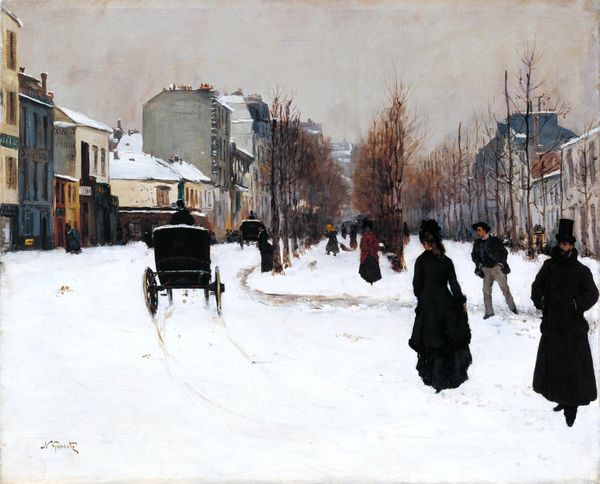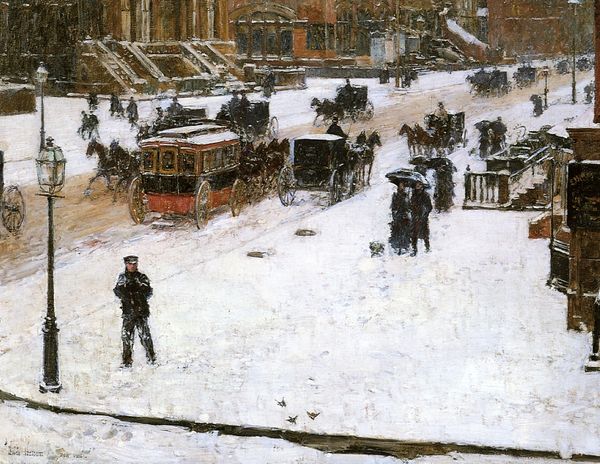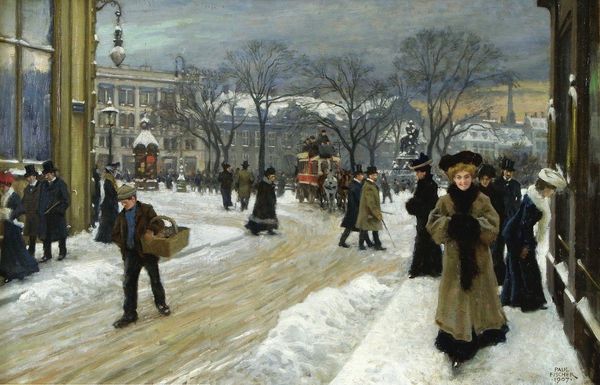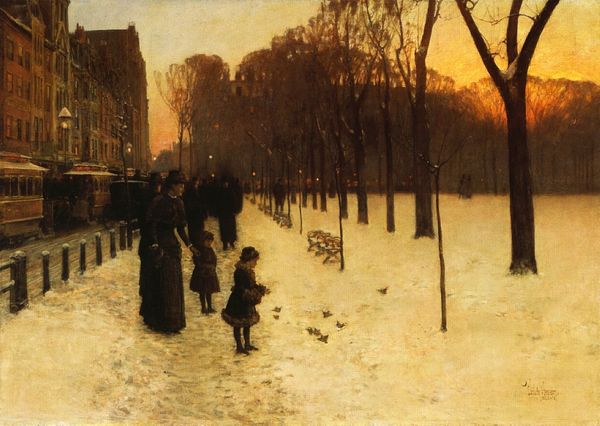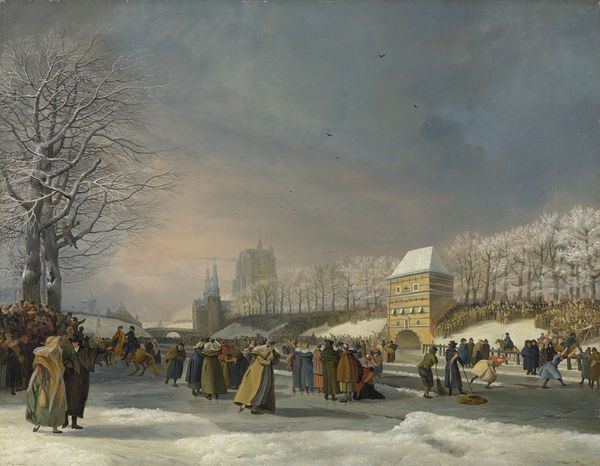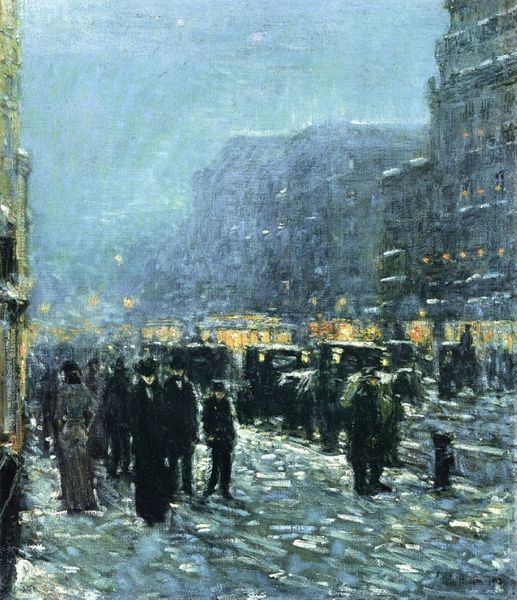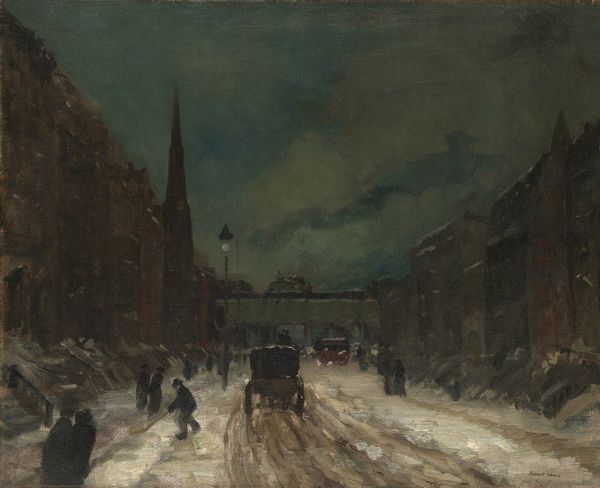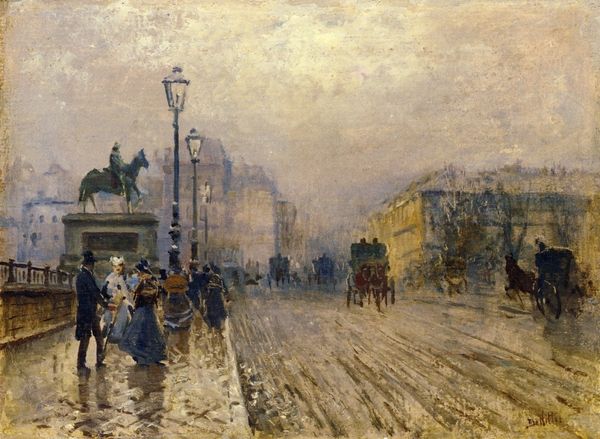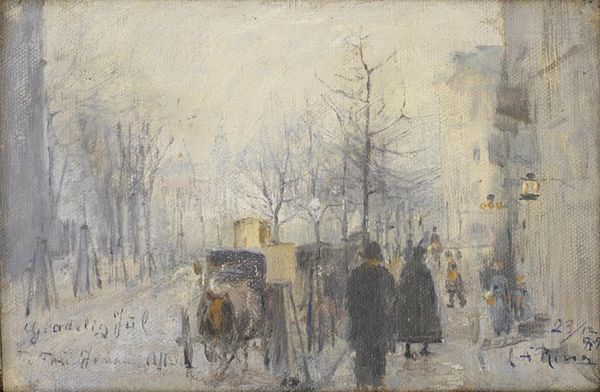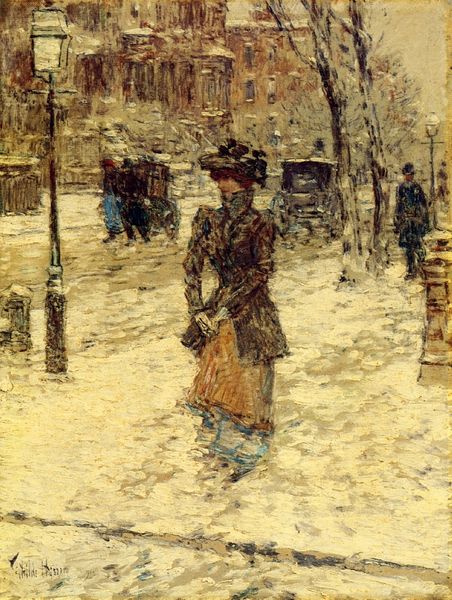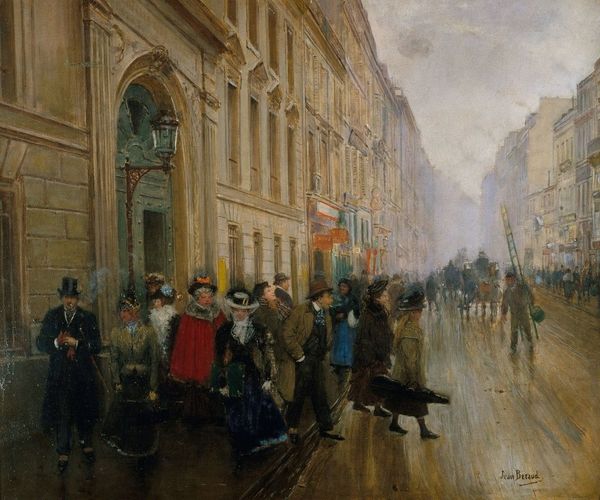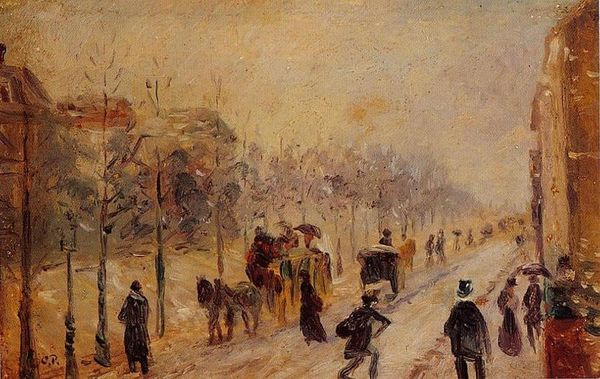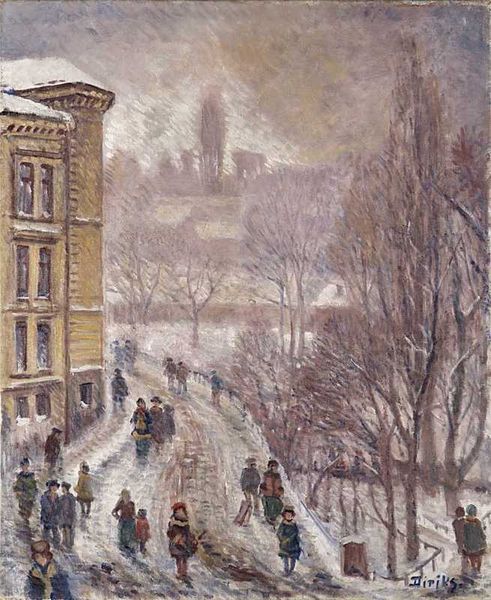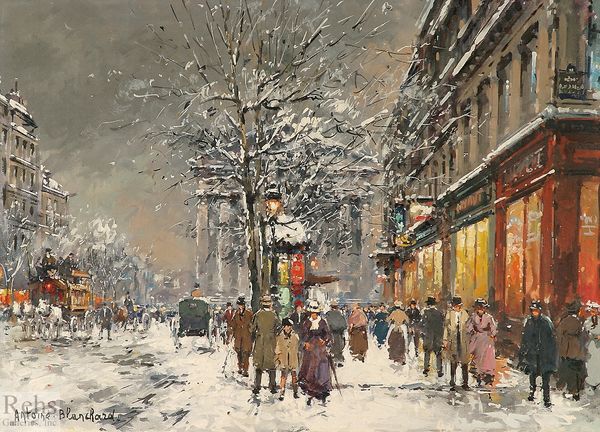
Looking for a shelter for the night 1894
0:00
0:00
vladimirmakovsky
Sevastopol Art Museum, Sevastopol, Ukraine
Dimensions: 88 x 129 cm
Copyright: Public domain
Curator: Vladimir Makovsky's oil painting, "Looking for a shelter for the night," created in 1894, offers a stark snapshot of societal disparity. Editor: The bleak winter scene really sets a tone. There’s a weariness etched onto the faces that just hits you immediately. It's emotionally heavy, with a palette that reflects the coldness of the situation. Curator: It's impossible to look at it and not consider the turbulent social climate of late 19th-century Russia, marked by growing urbanization and stark class divisions. Makovsky often critiqued social injustice through his genre paintings. Here, the image clearly aims to speak to the lived experiences of the impoverished. Editor: The artist certainly invokes potent symbolism, too. Think of the recurring motif of the journey: these people are literally looking for shelter. Shelter isn't just about physical space, it implies the search for safety, dignity, and acceptance within the structures of society. Look how the snow dominates the space; its symbolic meaning, the white as pure, emphasizes the bare state in which these people present themselves to society, contrasting what should be with their stark reality. Curator: Precisely. This intersects with a discourse around public versus private space; for these individuals, that division collapses. They’re forced to exist in the public sphere, their vulnerabilities exposed. Makovsky's realism is potent because it avoids idealizing poverty, refusing to frame their plight through romanticism, instead, providing honest social commentary. Editor: And in terms of iconographic readings, there's a link here to traditional depictions of the "Flight into Egypt", with the family of Christ looking for refuge, these figures embody displacement, struggling in their modern Egypt. The children visible in the work represent inherited suffering, reflecting cyclical social issues passed through generations. Curator: Placing it into context reveals his active role in movements like the "Peredvizhniki", striving to depict everyday Russian life. This wasn’t just passive observation; it was about agency, giving voice to those excluded from dominant narratives. It prompts reflection on responsibility and who’s left to uphold morality when existing societal structures fail them. Editor: Looking at this now has broadened the narrative into ideas that transcend borders and contexts, really prompting consideration of wider issues like social inequality. Curator: Agreed; its commentary is both historically specific and timelessly resonant, still able to make audiences feel unease and prompting reflection.
Comments
No comments
Be the first to comment and join the conversation on the ultimate creative platform.
